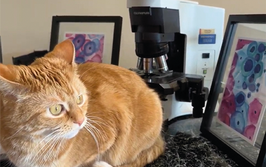To Adopt and Integrate
Artificial intelligence has a lot to offer pathology – but we need to make sure we’re keeping up
The recent and rapid adoption of AI in healthcare reflects the coalescence of multiple developments – including computer hardware advances that permit the rapid and effective processing of large datasets, such as those derived from pathology images. In particular, I think the field has been pushed to new limits by improvements in pathology imaging technologies and the recent application of convolutional neural networks and other methodologies to medical problems.
There are good and bad aspects to the changes that AI will bring. The advantages of using AI to interpret slides include increased efficiency, improved diagnostics and better patient stratification, as well as the ability to perform intermediate patient response assessments with greater accuracy. With computers doing the routine tasks at which they excel, pathologists will be free to focus on difficult and unresolved issues. My concern, though, is the potential for over-application of AI without sufficient oversight and interpretation by a pathologist. Many of my colleagues worry that computers will take away their jobs. I don’t worry about that – I worry that they’ll allow it!
The other comment I often hear is that pathology’s transition to digital mirrors radiology’s over the past decades. That is not entirely the case; there are several key differences, but the main one is costs. For radiology, there were clear financial advantages to adopting digital images. Those same advantages do not exist in pathology; for us, the move leads to added costs, which will demand defining a value proposition. I believe that value exists, but it is incumbent upon us to prove it to funders and governing bodies. There is also a data storage (and cost) issue. The data files for pathology images are significantly larger than those of radiology. As a result, the cost of storing the data and moving it around is significantly higher.
The one issue that has not been well-addressed is training. If we want to fully integrate computational pathology into the laboratory workflow, we need to be training this generation of pathologists – and the next – to do that. It’s not yet happening at any scale. Adoption of didactic as well as practical education in digital pathology and computational methodology will be essential for all training programs to adequately prepare pathologists for future changes in healthcare delivery.
What does the future of computational pathology look like? In the near term, I expect an explosion of publications in the realm of AI. This will be paralleled by greater implementation of digital imaging in pathology for routine diagnoses and second opinions – the latter an area where it is already commonly used. Both elements are required for the broad adoption and integration of AI. After that, my best guess is that we will soon see the adoption of diagnostic stratification of neoplasms with regard to prognosis and treatment based on deep learning algorithms – and from there, who knows?
Jeffrey Golden is Chair of the Department of Pathology at Brigham and Women’s Hospital and Ramzi S. Cotran Professor of Pathology at Harvard Medical School, Boston, USA.




















